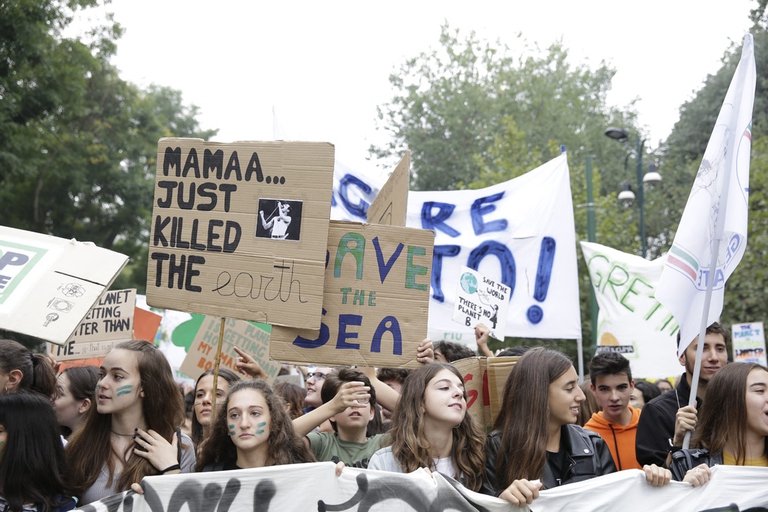
The World Forum on Urban Forests took place from the 28th of November to the first of December. More than 400 experts from 50 countries conversed with politicians, journalists and citizens to design the green cities of the future.
The project is similar to New York’s famous High Line constructed on the railway that once connected the Meat Market to Midtown. But in the case of Seoullo 7017 in South Korea’s capital Seoul, a walkway has been constructed on an overpass dating back to 1970 where cars once sped along, and where today people can wander and enjoy the revitalised area. The Seoullo 7017
The project is similar to New York’s famous High Line constructed on the railway that once connected the Meat Market to Midtown. But in the case of Seoullo 7017 in South Korea’s capital Seoul, a walkway has been constructed on an overpass dating back to 1970 where cars once sped along, and where today people can wander and enjoy the revitalised area.
The city of Seoul isn’t known for its beauty and aesthetics. It was constructed soon after the Korean War as a symbol of the country’s rapid industrialisation, in fact it was built very quickly and starting from the 1960s dozens of elevated highways were created to aid the flow of traffic, with little or no consideration for beauty and architecture. But things are starting to change.
The highway over the tracks that lead into Seoul train station was closed in 2006 as it was found to have serious safety problems, and it was likely to be demolished. But city planners realised it could be turned into a walkway. The project started in 2015 when Dutch architecture firm MVRVD won a competition to transform this abandoned overpass into the Seoul Skygarden aiming to foster a more user-friendly city and inspire a process of change for the entire neighbourhood.
The project includes the presence of 254 species of trees put in Korean alphabetical order with QR codes to access information on the plants, surrounded by cafés, flower shops, street markets, libraries and greenhouses. Stretching for 1,024 metres, it is now called Seoullo 7017, 70 being the year of its foundation as an overpass, and 17 the year of its renovation and opening. In the rather pleasant logo the two Ls of its name are represented by two legs walking. A renovation project that takes into account the importance of the past while working towards the future.
Meet Seoul’s new landmark – the hanging garden #Seoullo7017
It is becoming a new favorite tourism spot in Seoul … https://t.co/argpTkDRdv— BnBhero (@bnbhero_com) 14 giugno 2017
Almost half of the 53 million dollars invested in the project were spent to strengthen the structure. Today the walkway is designed to bear the weight of 50,000 people, 10 times the number that will be allowed on it at any time. Accessible by stairs at specific points, unlike the New York High Line Seoullo connects to commercial buildings with passageways. Illuminated with LED lights at night, it aims to give people a place to walk, learn and enjoy in a once neglected and abandoned area.
Some complaints relating to the project have come from residents and vendors at the market at the end of the walkway. They claim no parking area has been planned and that the area is already one of the most congested in town. Also, real estate speculation is expected to become a problem as new developments are planned in the surrounding areas. But the hope is that Seoullo 7017 will create a stronger sense of community by linking different neighbourhoods together.
Siamo anche su WhatsApp. Segui il canale ufficiale LifeGate per restare aggiornata, aggiornato sulle ultime notizie e sulle nostre attività.
![]()
Quest'opera è distribuita con Licenza Creative Commons Attribuzione - Non commerciale - Non opere derivate 4.0 Internazionale.
The World Forum on Urban Forests took place from the 28th of November to the first of December. More than 400 experts from 50 countries conversed with politicians, journalists and citizens to design the green cities of the future.
Introducing plants into buildings to absorb CO2, eliminating indoor pollution and improving your mood. This is green architecture.
The Semìno project is a journey of discovery through different countries’ food habits, offering migrants employment opportunities and allowing us to enjoy the properties of vegetables from all over the world.
A few of the best ideas for rooftop farms from around the world. Where farm-to-table agriculture is becoming a key components of urban growth.
A great Amazon reforestation project has been agreed in Brazil, the largest in history. Will it endure the victory of Jair Bolsonaro’s far-right politics in the presidential election?
A million plants and 40,000 trees. Liuzhou Forest City, designed by architect Stefano Boeri, is set to be inaugurated in 2020 in the northern Chinese city.
Urban forests are the local answer to global problems. The benefits are numerous and affect many areas such as the climate, biodiversity, health, tourism.
Architects Stefano Boeri’s call to action on urban forestry asks planners all over the world to consider greening our cities as the core element of all projects.
Sono sempre più numerosi i bambini birmani che dalle campagne si recano nelle metropoli in espansione in cerca di lavoro dopo l’apertura al libero mercato.








